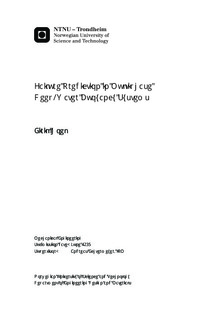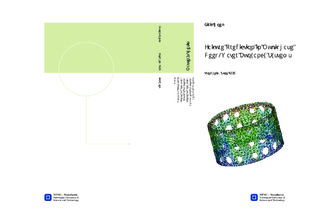| dc.contributor.advisor | Echtermeyer, Andreas | nb_NO |
| dc.contributor.author | Hoel, Eirik | nb_NO |
| dc.date.accessioned | 2014-12-19T12:28:44Z | |
| dc.date.available | 2014-12-19T12:28:44Z | |
| dc.date.created | 2013-09-16 | nb_NO |
| dc.date.issued | 2013 | nb_NO |
| dc.identifier | 648653 | nb_NO |
| dc.identifier | ntnudaim:10082 | nb_NO |
| dc.identifier.uri | http://hdl.handle.net/11250/241788 | |
| dc.description.abstract | The objective of this thesis is to explore how a new type of buoyancy material foroshore applications will perform under operating conditions. This includes buoy-ancy loads and extreme hydrostatic pressure. The new material system, Compbuoy,consists of porous, low cost pellets in a polymer matrix. Conventional buoyancyelements today are lled with syntactic foam, a much more expensive material. Asthe promising material Compbuoy has been developed, critical failure mechanismsmust be investigated to ensure the sustainability of the solution.Shear stress was identied as the most critical stress component and shear strengthtesting was performed both experimental and numerical. A new punch tool testmethod was developed to measure the load required to break the sample in shear,and calculate the shear strength by analyzing the results. A test rig was constructedand test samples were produced and tested. Finite element analysis was performedto verify the validity of dierent test parameters. The numerical results were foundto coincide well with the general mechanical behavior of the experimental shear test.FEA was also used to estimate the shear strength and failure strain of the sample,but some large deviations were discovered. Further testing of material propertieswas performed to explain the reason for these deviations.The shear test results were compared with the design requirements for service at2500m water depth. Improvements are suggested to improve the compressive andshear strength. | nb_NO |
| dc.language | eng | nb_NO |
| dc.publisher | Institutt for produktutvikling og materialer | nb_NO |
| dc.title | Failure Prediction in Multiphase Deep-Water Buoyancy Systems | nb_NO |
| dc.type | Master thesis | nb_NO |
| dc.source.pagenumber | 115 | nb_NO |
| dc.contributor.department | Norges teknisk-naturvitenskapelige universitet, Fakultet for ingeniørvitenskap og teknologi, Institutt for produktutvikling og materialer | nb_NO |

